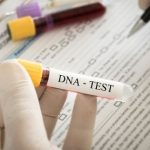By now you have heard the news: On October 3rd, 2011, Amanda Knox and former boyfriend, Raffaele Sollecito, won their appeal in an Italian court and were acquitted and freed for the murder of British student, Meredith Kercher. Despite a previous trial and guilty verdict based on supposed DNA evidence, both convicted parties won an appeal and a deeper trial over the evidence occurred.
While we could pick over all of the details of the case, we’ll leave that for another organization to discuss. Instead, allow us to focus alone on genetic evidence.
With no obvious motive, no independent witnesses and no confessions, the Italian prosecutors had to rely on genetic evidence found at the crime scene to convict Knox and Sollecito. This makes sense as genetic evidence is supposed to be iron clad. Or is it?
The original conviction relied on traces of Sollecito’s DNA being found on the victim’s (Kercher) brassiere clasp, together with traces of DNA from both defendants being found on the knife allegedly used to slash Kercher’s throat. However, similar to our famous U.S. tales of botched crime scene evidence (ie. the Jon Benet Ramsey or OJ Simpson cases), the prosecutions evidence has been marred with rumors of bad police work and possible fabricated evidence. Furthermore, not only did the defendants know Meredith Kercher, but Amanda Knox lived with her.This complicates matters on an enormous level.
The first issue is called “contamination”. Unlike crimes where the victim and perpetrator don’t know each other, and therefore a genetic link is most likely an obvious connection, it is hard to do the same with roommates and their visiting friends – there will always be matching DNA present. And although DNA evidence puts a person ‘at the scene of the crime’; it does not necessarily prove they committed the crime.
Secondly, although DNA evidence can match the scene of a crime, it does not allow for “time-based evidence”. There is no telling if a match occurs because a victim or perpetrator was present at the time of the incident or exists because they were present at some other point in history.
Finally, although many people have been successfully prosecuted on DNA evidence, it is not failsafe or full proof. Typically, a DNA sample found on a murder weapon will be said to match the DNA of the suspect to the extent that only one person in one million would have the same profile. However, if a particular genetic profile is held by one person in, say, one million this means that in a country with a population of 60m will have 60 people that give a perfect mach for the DNA evidence and even more would match a partial profile of that evidence.
In the U.S., a man called Kerry Robinson was convicted a few years ago of gang rape. In an independent investigation last year DNA evidence from the crime scene plus Robinson’s DNA profile was shown to 17 ‘blind’ analysts with no contextual information: the 17 experts were hugely divided – 12 said the suspect could be excluded.
Although no one can or should doubt the genetic evidence is a powerful tool for solving crime, it is not perfect and it has it’s weakness, from false positives to human error. One thing is for certain – this legal matter and it’s evidence will be scrutinized for a long time to come. Let’s hope that we can learn from it.




